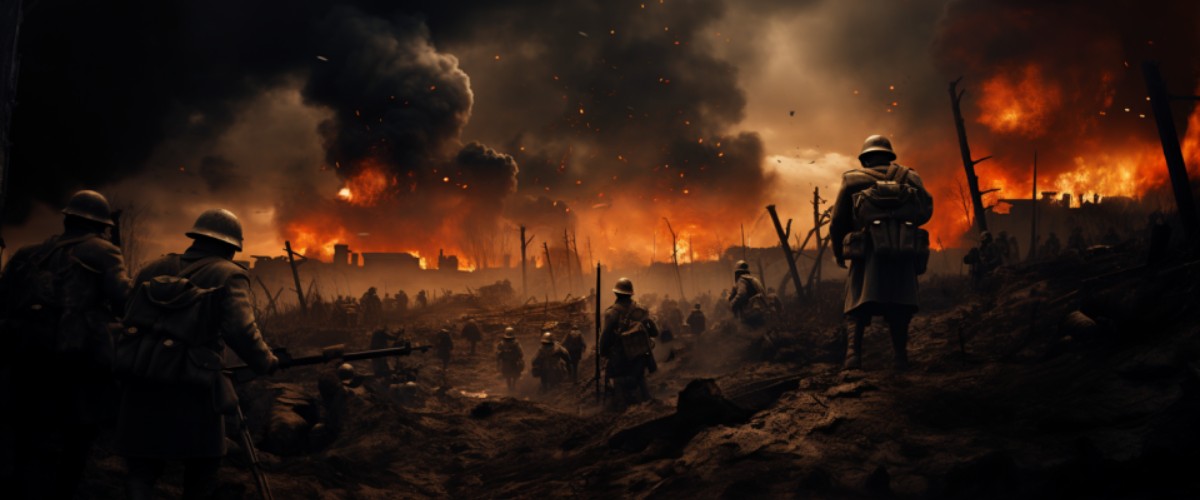World War I, fought from 1914 to 1918, fundamentally shifted global powers, reshaped borders, and resulted in the loss of millions of lives. A conflict initially centred in Europe, it burgeoned into a full-scale global war involving numerous nations from various continents.
Background
- Origins and Catalysts
- Complex web of alliances: Triple Entente (France, Russia, and the United Kingdom) and Triple Alliance (Germany, Austria-Hungary, and Italy).
- Assassination of Archduke Franz Ferdinand of Austria-Hungary in 1914.
- Rising nationalism, militarism, and imperialistic pursuits among European powers.
- Key Figures
- Kaiser Wilhelm II (Germany)
- Tsar Nicholas II (Russia)
- King George V (United Kingdom)
- President Woodrow Wilson (USA)
- Emperor Franz Joseph (Austria-Hungary)
Major Happenings
- Initial Movements
- Germany’s invasion of Belgium and subsequent entry of the United Kingdom into the war.
- Battles on the Western and Eastern Fronts initiated.
- Significant Battles
- Battle of the Somme
- Battle of Verdun
- Battle of Gallipoli
- U.S. Involvement
- Sinking of the Lusitania and Zimmermann Telegram, leading to the United States joining the war in 1917.
- Russian Withdrawal
- The Bolshevik Revolution causes Russia to withdraw from the war in 1917.
Immediate Outcomes
- Treaty of Versailles (1919)
- Germany faced severe economic and territorial penalties.
- Established the League of Nations, aiming to prevent future global conflicts.
- Territorial Realignments
- Emergence of new countries, and shifting of borders particularly in Central and Eastern Europe.
- Human and Economic Cost
- Immense loss of life, approximately 16 million deaths and 21 million wounded.
- Severe economic strain and infrastructure damage in involved nations.
Long-term Impact
- Global Power Dynamics
- Weakening of European global dominance.
- Ascendance of the United States and the Soviet Union as superpowers.
- Precursor to World War II
- Economic and political instability in Germany, contributing to the rise of Adolf Hitler.
- Unresolved tensions from WWI contributing to global conflicts during the interwar period.
- Technological and Tactical Advancements
- Development and enhancement of military technologies, tactics, and strategies.
- Cultural and Societal Shifts
- Change in societal roles, particularly for women, due to their active participation in war efforts.
Conclusion
World War I irreversibly altered the geopolitical landscape, sowing the seeds for subsequent conflicts and significantly influencing technological, tactical, societal, and political developments throughout the 20th century. In remembrance, the poppy became a symbol of sacrifice and loss, its red bloom an everlasting reminder of the bloodshed. In today’s context, WWI continues to serve as a solemn reminder of the devastating impact of global conflict and underscores the perpetual pursuit of diplomacy, understanding, and peace amongst nations in an increasingly interconnected world. The dialogues, partnerships, and institutions forged in its aftermath emphasise the collective aspiration towards maintaining peace and avoiding the repetition of such cataclysmic events.








